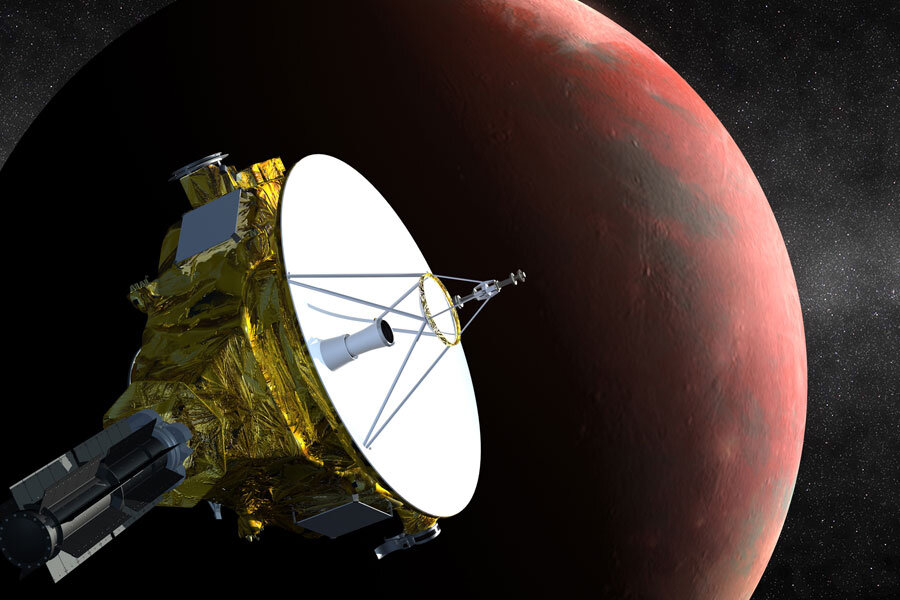NASA's New Horizons wakes up as it nears Pluto, 'juicy science' awaits
Loading...
By any measure, it has been a long wait.
On Saturday, the New Horizons spacecraft woke up for good nearly nine years after its launch, ready to begin the final preparations before it reaches Pluto on July 14, 2015.
But in many ways, scientists have been waiting since 1930 – when Pluto was discovered – for the months ahead. Pluto might not be a planet anymore (or maybe it is), but it's still a fascinating place and a window in the frigid and so far unexplored margins of our solar system.
The best photos scientists have of Pluto remain portraits that look like smudged reddish-brown thumbprints taken by the Hubble Space Telescope. They offer intrigue but not much else. What is that molasses-colored material? Why has the northern hemisphere brightened during the past 10 years? Might Pluto have rings?
To a significant degree, Pluto is still a mystery. But starting in January, when New Horizons begins its science mission, the fog of ignorance and guesswork that has surrounded Pluto since the day it was discovered will begin slowly to be drawn back.
New Horizons is currently about 162 million miles from Pluto. Saturday was just the wakeup call. Most of New Horizon's instruments have been hibernating since launch, with only periodic and brief wakeup calls to make sure they're all working. Now, there's no going back to bed.
The mission is NASA’s first to the Kuiper Belt, a thicket of frozen rubble around and well past the orbit of Neptune. When Pluto was discovered, the existence of the Kuiper Belt wasn’t even known, hence Pluto’s classification as a planet. Now, astronomers have found several Pluto-size dwarf planets in the Kuiper Belt, leading to the debate over whether Pluto is a planet.
But this will be the first they get to study up close.
Like several other Kuiper Belt objects, Pluto is a peculiar bird. Though Pluto is less than one-third the size of our moon, it has at least five moons of its own, including one that is nearly half its size and only 12,000 miles away. (Our moon is 239,000 miles from Earth.) That moon, Charon, might long ago have had a subterranean ocean, and Pluto is thought to have a thin atmosphere that freezes and falls to the ground as frost during winter.
New Horizons will arrive during Pluto’s autumn before plunging further in the Kuiper Belt, perhaps rendezvousing with another object. By May, however, New Horizons’s images will be better than the blurry Hubble image.
"I really want to emphasize that we'll have lots of juicy science – historic science – accumulated well before the day of the closest approach," Hal Weaver, a New Horizons project scientist, told planetary.org.







